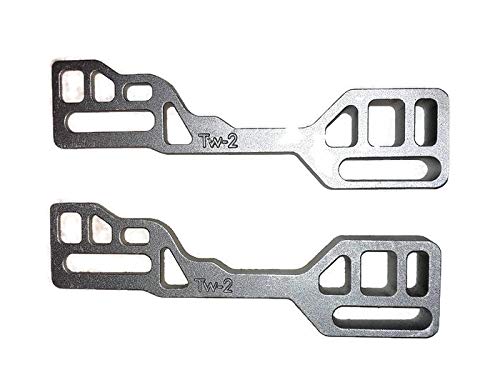
A wedge is a simple machine that is used to split objects apart or lift heavy objects with ease. It is one of the six classical simple machines, along with the lever, pulley, wheel and axle, inclined plane, and screw. The wedge is shaped like a triangle, with a thick end and a thin end. It works by applying a downward force to the thick end, which creates a sideways force that splits or lifts the object.
So, what is the formula for a wedge?
The formula for a wedge involves two basic concepts: force and distance. The force applied to the wedge is known as the effort force, while the distance over which the force is applied is known as the effort distance. These two values are used to calculate the mechanical advantage of the wedge.
The mechanical advantage of a wedge can be calculated using the following formula:
Mechanical Advantage = Length of the wedge / Width of the wedge
This formula shows that the mechanical advantage of a wedge is dependent on its physical dimensions. A longer and narrower wedge will have a higher mechanical advantage, meaning it can split or lift objects more easily. On the other hand, a shorter and wider wedge will have a lower mechanical advantage, requiring more effort to accomplish the same task.
Understanding the Basic Concepts
Before diving into the formula for a wedge, it is important to have a basic understanding of some key concepts.
- Geometry: A wedge is a simple machine that is used to raise, hold, or separate objects. It is a triangular-shaped piece of material with a thin end and a thick end.
- Physics: Wedges operate on the principle of mechanical advantage, which means that they allow you to exert less force to achieve a greater output force. This is achieved by amplifying the length of the force arm relative to the length of the load arm.
- Force: In physics, force is a push or pull on an object that causes it to change its motion or shape. The wedge takes advantage of the force applied to its thin end to generate an output force at its thick end.
- Friction: Friction is the resistance to motion between two surfaces in contact with each other. It plays a crucial role in the operation of wedges, as it helps to hold the wedge in place and prevent it from slipping.
With these basic concepts in mind, we can now proceed to the formula for a wedge and how it relates to these concepts.
The Relationship between Force and Load
In the study of wedges, it is important to understand the relationship between force and load. A wedge is a simple machine that consists of a sharp, pointed object typically made of metal or wood. The force applied to the wedge is known as the input force, while the resistance the wedge overcomes is called the load.
When a wedge is used to split an object, such as wood or rock, an external force is applied to the wedge to drive it into the material. This force is exerted over a small area, which creates a high pressure. The pressure exerted on the wedge creates a shear stress, causing the material to deform and eventually split.
The relationship between the force and load can be described by the following formula:
Force = Load / Mechanical Advantage
The mechanical advantage of a wedge is dependent on the angle of the wedge and the thickness of the material being acted upon. A steeper angle and a thinner material result in a higher mechanical advantage, meaning less force is required to overcome the load.
In practical applications, the force required to overcome the load can be calculated using this formula. Understanding the relationship between force and load is crucial when designing or using wedges to ensure efficient and effective splitting or cutting processes.
Calculating the Mechanical Advantage
A wedge is a simple machine that is used to separate, lift, or hold objects. It is a triangular-shaped inclined plane that reduces the force needed to do work. The mechanical advantage of a wedge can be calculated using the following formula:
| Mechanical Advantage (MA) | = | Length of Wedge (l) | / | Width of Wedge (w) |
In this formula, the length of the wedge refers to the distance from the base to the vertex, and the width of the wedge refers to the distance across the base. By dividing the length by the width, we can determine how much the force is multiplied when using a wedge.
For example, if a wedge has a length of 10 centimeters and a width of 5 centimeters, the mechanical advantage would be 10/5 = 2. This means that using the wedge can multiply the applied force by 2, making it easier to perform the desired task.
Understanding the mechanical advantage of a wedge can help engineers and designers determine the most effective wedge shape and size for different applications. By optimizing the mechanical advantage, they can design wedges that require less force to accomplish specific tasks, improving efficiency and reducing the amount of energy required.
Exploring the Importance of Angle
When it comes to understanding the formula for a wedge, it is crucial to explore the concept of angle. The angle of a wedge refers to the tilt or slope of its sides, which plays a significant role in determining its mechanical advantage and functionality.
Definition of Angle
An angle is formed when two lines or surfaces meet at a point. It is measured in degrees and can vary in size depending on the inclination of the lines or surfaces.
Importance of Angle in Wedges
The angle of a wedge determines its mechanical advantage. Mechanical advantage refers to the amplification of force or efficiency gained by using a tool or machine. Different angles can result in different mechanical advantages, allowing wedges to be used in various applications.
For example, a wedge with a sharper angle, such as a knife, can exert a higher mechanical advantage by concentrating force over a smaller area. This makes it more effective in cutting tasks. On the other hand, wedges with a larger angle, like an axe, distribute force over a larger area, making them suitable for splitting wood.
Optimal Angle for Wedges
While the angle of a wedge can vary depending on its intended use, there is an optimal angle that maximizes its efficiency. The optimal angle balances the mechanical advantage gained from a sharper angle with the stability and durability of a larger angle.
In engineering and design, this optimal angle is often determined through calculations and testing. It ensures that the wedge can effectively perform its intended task while minimizing the risk of failure or damage.
Overall, the angle of a wedge is a fundamental aspect that affects its performance and functionality. Understanding the importance of angle allows engineers, designers, and users to optimize the design and use of wedges in various applications.
Factors Affecting the Efficiency of a Wedge
1. Angle of the Wedge: The angle at which the wedge is shaped plays a crucial role in its efficiency. The narrower the angle between the two surfaces of the wedge, the more effective it is at dividing and separating objects. However, too narrow an angle can result in a weaker mechanical advantage.
2. Material of the Wedge: The material used to construct the wedge affects its efficiency. A harder material, such as steel, can withstand greater forces and is less likely to deform or break when used. Softer materials, like wood, may not be as durable or efficient in certain applications.
3. Friction: The presence of friction between the wedge and the material being split can affect its efficiency. Higher frictional forces can make it more difficult for the wedge to penetrate the material, reducing its effectiveness. Lubrication or applying a coating can help reduce friction and improve the efficiency of the wedge.
4. Force Applied: The amount of force applied when using a wedge can greatly impact its efficiency. The force should be applied evenly and steadily to prevent any unnecessary energy loss. Applying too much force may lead to wastage, while applying too little force may not generate enough splitting power.
5. Wedge Design: The overall design and shape of the wedge can affect its efficiency. Factors such as the length, width, and thickness of the wedge can influence how effectively it splits materials. A well-designed wedge with proper proportions can provide better efficiency and increased mechanical advantage.
6. Surface Condition: The condition of the surfaces in contact with the material being split can impact the efficiency of the wedge. Uneven or damaged surfaces may hinder the wedge’s ability to penetrate the material effectively. Ensuring that the surfaces are clean, smooth, and in good condition can enhance the efficiency of the wedge.
7. Technique and Skill: The technique and skill of the person using the wedge can greatly affect its efficiency. Proper positioning, angle, and application of force can make a significant difference in the effectiveness of the wedge. Experience and proficiency in using wedges can improve efficiency and achieve better results.
8. Environment: The environment in which the wedge is being used can also impact its efficiency. Factors such as temperature, humidity, and external forces can affect the performance of the wedge and how effectively it splits materials. Adapting the wedge and techniques to the specific environment can optimize its efficiency.
Considering these factors when using a wedge can help maximize its efficiency and effectiveness in various applications, whether it’s splitting objects, holding materials in place, or facilitating mechanical processes.
Real-life Application Examples
- Wedges are commonly used in construction and engineering to create gaps or spaces. For example, when building a brick wall, wedges are often used to space the bricks evenly and ensure stability.
- In automotive maintenance, wedges are used to secure and stabilize parts during repairs. For instance, when working on a car engine, wedges can be inserted to prevent the parts from moving or shifting.
- Wedges are an essential tool in woodworking, particularly in joinery and carpentry. They are used to split wood, make precise cuts, or create joints in furniture production.
- In medicine, wedges can be used as orthopedic devices to correct misalignment or provide support. For example, wedge pillows are often used to elevate the head and upper body, relieving symptoms of acid reflux or sleep apnea.
- Wedges are also used in sports equipment. Golf clubs, for instance, have specially designed club heads with wedges to help lift the ball out of certain terrain, such as sand traps.
- In agriculture, wedges can be used to split logs or wooden blocks for firewood or construction purposes. They are also employed in splitting stone blocks for wall construction.










